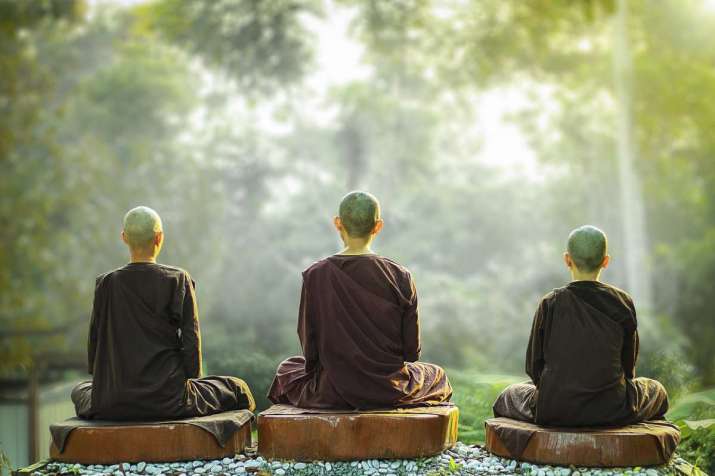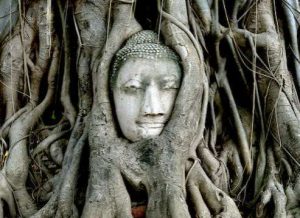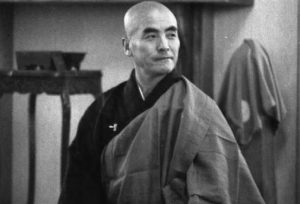
All living beings desire happiness and recoil from suffering.
When the Buddha said he taught suffering and the end of suffering, rather than being pessimistic, he was being optimistic. When the Buddha explained dukkha (Pali. suffering, discontent), he explicated its cause, how to eradicate its cause, and the method of practice leading to its eradication. He taught us the way to avoid suffering.
Happy will he be who knows how to bring an end to suffering. Sukha may be translated as pleasant, pleasurable, happy, happiness, contentment, satisfaction, or even as joy and bliss. This would suggest that there must be different kinds and degrees of happiness, and the Theravada texts do indeed delineate between happiness based on attachment to worldly pleasures and happiness based on the higher attainment of moral purification.
What follows below is largely extracted from the writing of S. N. Goenke, teaching in the tradition of U Ba Khin, in a paper called “Was the Buddha a Pessimist?” published by the Vipassana Institute (Vol.16, No.9, 7 September 2006), in which the esteemed teacher and author points out how the Buddha was careful and qualified his use of the word sukha.
The term sukha is always dependent on conditions and has different meanings within different contexts. For example, concerning different kinds of worldly happiness for ordinary householders, the Buddha enumerated these four types:
Ānaṇya sukha: The happiness that comes from being free of debt. In today’s world, many of us experience anxiety connected with being deeply in debt, but after such debts are finally paid off we feel happy.
Atthi sukha: The happiness that comes from possessing wealth and property, even if we are not yet enjoying it or using it. For example, when our net income is increasing, when the value of our holdings is increasing, and when we keep accumulating more and more money from different sources, this kind of sukha is the joy of possession.
Bhoga sukha: When the joy of possession evolves into the joy of enjoying possessions. When this happens, one’s happiness increases. Because of one’s wealth, one delights in physical comforts: one sees pleasing sights; one hears melodious sounds; one smells sweet fragrances; one tastes delicious foods; and one enjoys the tactile pleasure of physical contact.
For a householder, there is yet another happiness that is even greater than the preceding three. It comes from abstaining from deeds that go against the Buddha’s instructions on the Noble Eightfold Path.
As a householder, one watches and examines oneself to be sure he is abstaining from any form of unwholesome conduct:
He abstains from killing; from stealing; from sexual misconduct; from lying and deceiving others; from harsh speech, backbiting, and slanderous speech that hurts others. He abstains from the use of intoxicants. He ensures that his livelihood does not involve dealing with weapons, poisons, animals for slaughter, meat, and intoxicants such as alcohol.
His mind delights in wholesome actions. He remains free of fear from the laws of government or from the censure of society, in the present life, as well as free from fear of descending to the nether worlds in the afterlife. He also remains free from the agony of remorse.
Remaining joyful, calm, and fearless, such a pure-minded person experiences a type of happiness that is undoubtedly superior to other worldly pleasures.
Because it is not easy to assign a qualifying modifier for each and every kind of happiness, the Buddha used the device of comparison to explain which kinds of happiness are lesser and which kinds of happiness are greater. Some examples will help to illustrate.
For example, when comparing:
1. The happiness of having a home and the happiness of homelessness (of a monk or a nun)—of the two, the happiness of homelessness is greater.
2. The happiness of sensual pleasures and the happiness of renunciation—of the two, the happiness of renunciation is greater.
3. The happiness of various realms and the happiness beyond all the realms of existence—of the two, the happiness beyond the realms of existence is greater.
4. The happiness accompanied by asavas (Pali. intoxicating impulses) and the happiness not accompanied by asavas—of the two, the happiness not accompanied by asavas is greater.
5. The happiness of material comforts and the happiness transcending material comforts—of the two, the happiness transcending material comforts is greater.
6. The happiness of the ariyas (Pali. noble ones) and the happiness of anariyas (of unenlightened ones)—of the two, the happiness of ariyas is greater.
7. The happiness of body (one that comes from physical comfort) and the happiness of mind—of the two, the happiness of mind is greater.
8. The happiness accompanied by piti (Pali. pleasurable sensations in the body) and the happiness without piti—of the two, the happiness without piti is greater.
9. The happiness of indulgence and the happiness of restraint—of the two, the happiness of restraint is greater.
10. The happiness of a scattered mind (of the mind not in jhana) and the happiness of a concentrated mind (of the mind in jhanic states)—of the two, the happiness of a concentrated mind is greater.
11. The happiness with piti as its object and the happiness beyond piti as its object—of the two, the happiness beyond piti is better.
13. The happiness with form as object and happiness with formlessness as object—of the two, the happiness with formlessness as its object is greater.
The Buddha enumerated many types of happiness* such as:
kayikasukham, cetasikasukham, dibbasukham, manusakasukham, labhasukham, sakkarasukham, yanasukham, sayanasukham, issariyasukham, adhipaccasukham, gihisukham, samannasukham, sasavasukham, anasavasukham, upadhisukham, nirupadhisukham, samisasukham, niramisasukham, sappitikasukham, nippitikasukham, jhanasukham, vimuttisukham, kamasukham, nekkhammasukham, vivekasukham, upasamasukham, sambodhasukham.
Sukha (happiness) is always dependent on circumstances and has different meanings in different contexts.
Thus we see how the Buddha enumerated different kinds of happiness by providing detailed, analytical explanations in words. Even more importantly, he taught a clearly outlined method that allows practitioners to experience the superior kinds of happiness:
Cittaṃ dantaṃ sukhāvahaṃ
Restraint of mind brings happiness.
Cittaṃ guttaṃ sukhāvahaṃ
Guarding one’s mind brings happiness.
Dhammo ciṇṇo sukhāvaho
The practice of Dhamma brings happiness.
We have the instructions, and we have the equipment. All that remains is for us to do it.
* Unfortunately it is not possible to deal with them all here.













I am trying to find the meaning of the list of sukham listed https://www.dhammawheel.com/viewtopic.php?p=667992#p667992 where can i find the answer?
Highly insightful article. All 13 points have a unique message. In other way – so many types of happiness…Across the world, we all seek happiness and fulfillment in our lives. Yet, we tend to live our lives in a way that keeps us from genuine, long-lasting happiness. I think what is holding us back is the fear of pain.